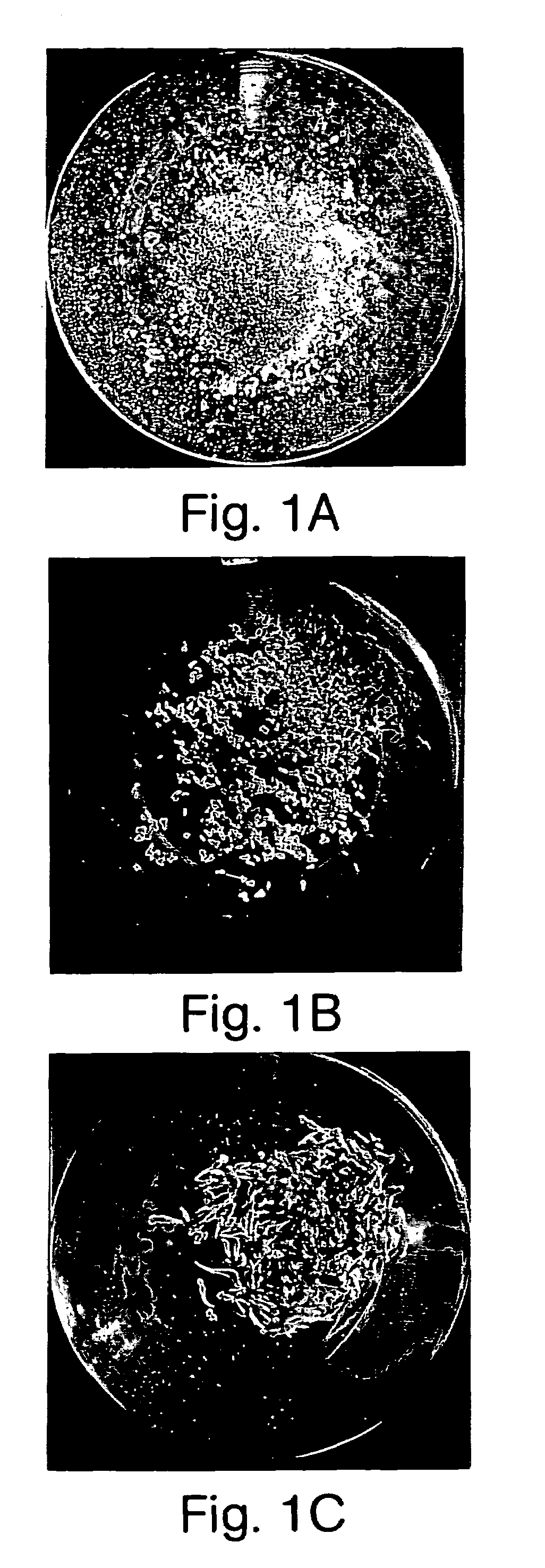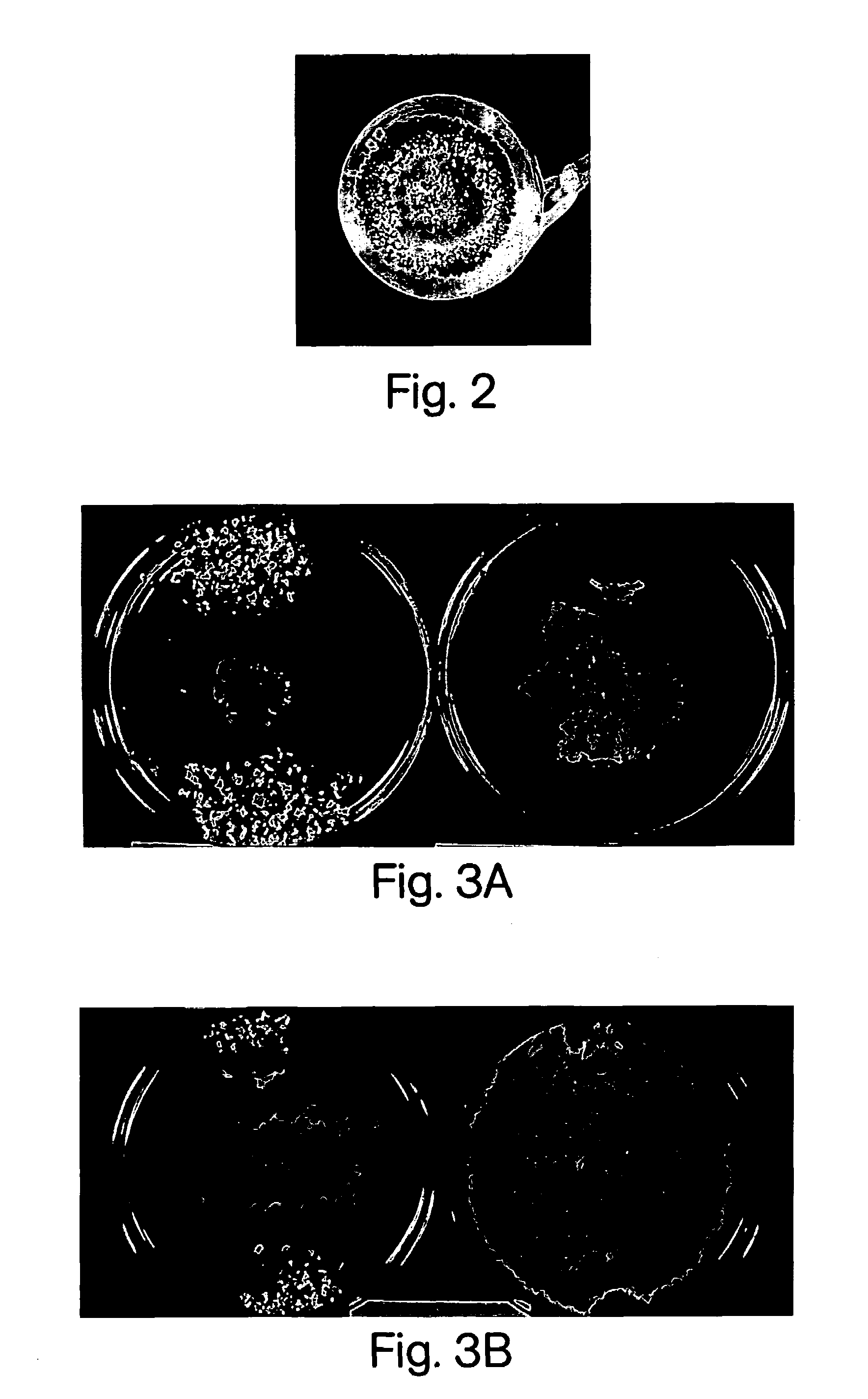Pathogen-resistant grape plants
- Summary
- Abstract
- Description
- Claims
- Application Information
AI Technical Summary
Benefits of technology
Problems solved by technology
Method used
Image
Examples
example 1
Perennial Grape Embryonic Culture System
[0088]The following method has proven effective for the production of perennial embryogenic grape cultures, and for the regeneration of grapevine by somatic embryogenesis.
[0089]Explant Tissue and Culture Initiation
[0090]In the culture initiation step, explant material was collected from the field, greenhouse, or in vitro shoot micropropagation cultures of grapevine and placed into in vitro culture. This explant material was typically collected from leaves, anthers, or tendrils, but is also obtained from other vegetative or reproductive tissues of grapevine. Once collected, the explant tissue, if desired, was surfaced sterilized according to standard methods, and then placed on a suitable solid culture initiation medium in a petri plate.
[0091]Any of a number of well known media, e.g., Murashige and Skoog (MS) and Nitsch's medium, may be used. Such media typically include inorganic salts, vitamins, micronutrients, a nitrogen source, and a carbon...
example 2
Production of Highly Embryogenic Grape Cells Using Liquid Suspension or Solid Cultures
[0104]A method has also been developed for the production of large quantities of grapevine somatic embryos using either a liquid cell suspension culture or a solid culture system. These methods are particulary useful for producing highly embryogenic cells that are capable of regenerating into whole plants. Below, a simple protocol for efficient somatic embryogenesis of grapevine using either a liquid cell suspension culture or a solid culture system is presented.
[0105]In general, the method includes a multistage culturing process typically involving (i) culture initiation; (ii) identification and isolation of embryogenic cells or embryogenic cell masses; (iii) production of perennial embryogenic cultures; and (iv) concentration of highly embryogenic cell clusters. The method involves the following steps.
[0106]Explant tissue is placed on a suitable culture initiation medium, as is described herein. ...
example 3
Selection of Disease Resistant Embryogenic Cells and Plants of Grapevine
[0144]The perennial grape embryogenic cultures of the invention can be used for the selection or screening for grape cells having resistance to toxic substances, such as those present in a filtrate produced by a fungal culture. Such pathogens include, without limitation, bacteria and fungi. Plant diseases generally caused by these pathogens are described in Chapters 11–16 of Agrios, Plant Pathology, 3rd ed., Academic Press, Inc., New York, 1988, hereby incorporated by reference. The “Compendium of Grape Diseases” (APS Press (1988) R. C. Pearson & A. C. Goheen, Eds.) describes diseases that affect grape plants. Examples of bacterial pathogens include, without limitation, Agrobacterium vitis, Agrobacterium tumefaciens, Xylella fastidosa, and Xanthomonas ampelina. Examples of fungal pathogens include, without limitation, Plasmopara viticola, Botrytis cinerea, Guignardia bidwellii, Phomophsis viticola, Elsinoë ampel...
PUM
 Login to View More
Login to View More Abstract
Description
Claims
Application Information
 Login to View More
Login to View More - R&D
- Intellectual Property
- Life Sciences
- Materials
- Tech Scout
- Unparalleled Data Quality
- Higher Quality Content
- 60% Fewer Hallucinations
Browse by: Latest US Patents, China's latest patents, Technical Efficacy Thesaurus, Application Domain, Technology Topic, Popular Technical Reports.
© 2025 PatSnap. All rights reserved.Legal|Privacy policy|Modern Slavery Act Transparency Statement|Sitemap|About US| Contact US: help@patsnap.com



